Today we are taking a look at the Sabrent Rocket NVMe 4.0 500GB SSD. This is a premium drive from Sabrent featuring PCIe 4.0 x4 connectivity, the Phison E16 controller, a DRAM cache, and TLC NAND. This is the second PCIe 4.0 SSD we have looked at in our new series of SSD reviews, previously looking at the 1TB version of this drive before I came onboard at STH.
Sabrent Rocket NVMe 4.0 500GB Overview
The Rocket NVMe 4.0 500GB comes in a double-sided M.2 2280 (80mm) form factor.
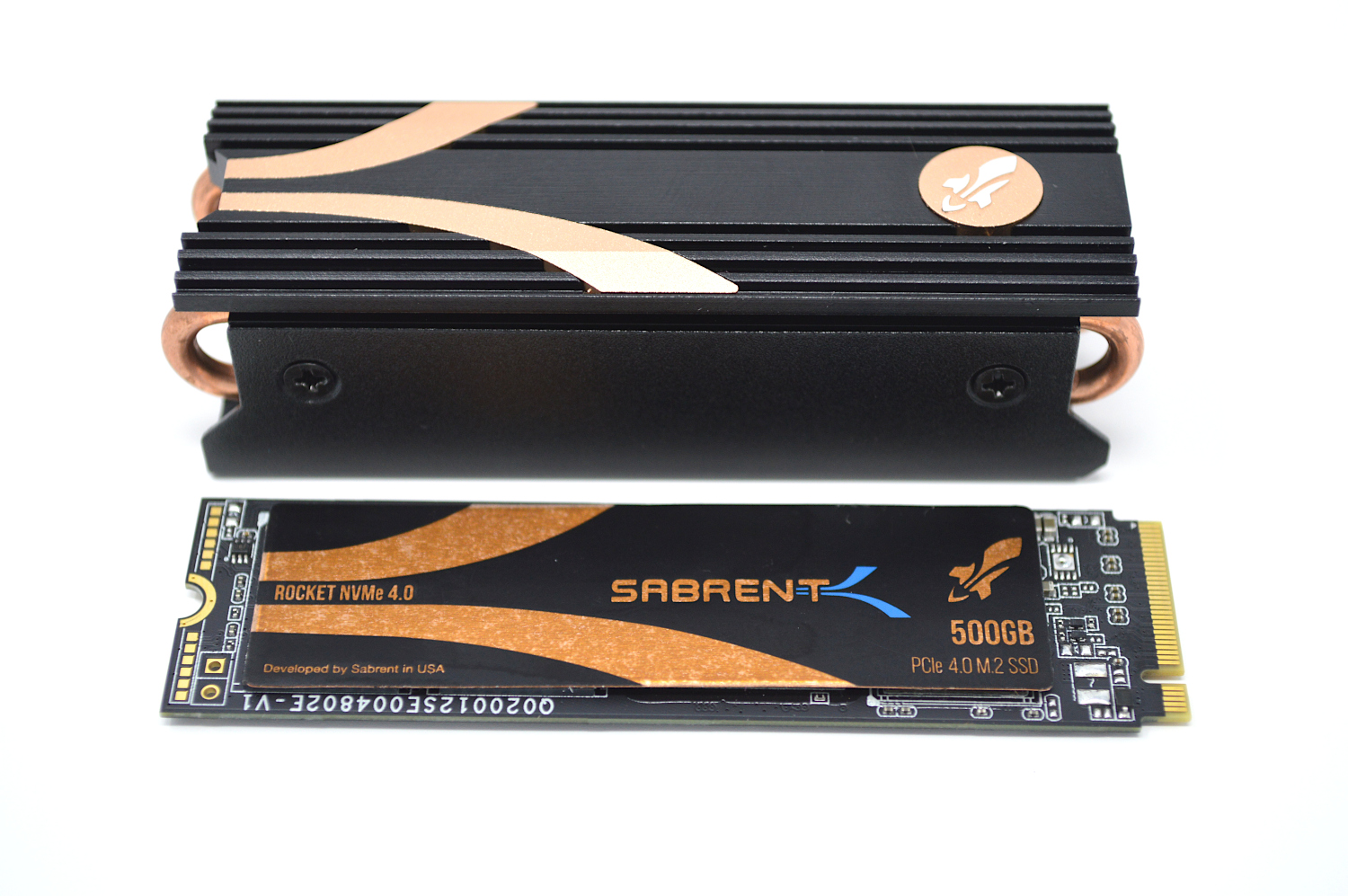
Hidden beneath the drive label is a thin copper heat spreader to help keep the drive cool. Additionally, our review unit included a heatsink that is recommended for use when the drive is operating at PCIe 4.0 speeds. All tests are performed with the heatsink attached, though we will also test thermal performance without the heatsink to see if it is truly necessary.
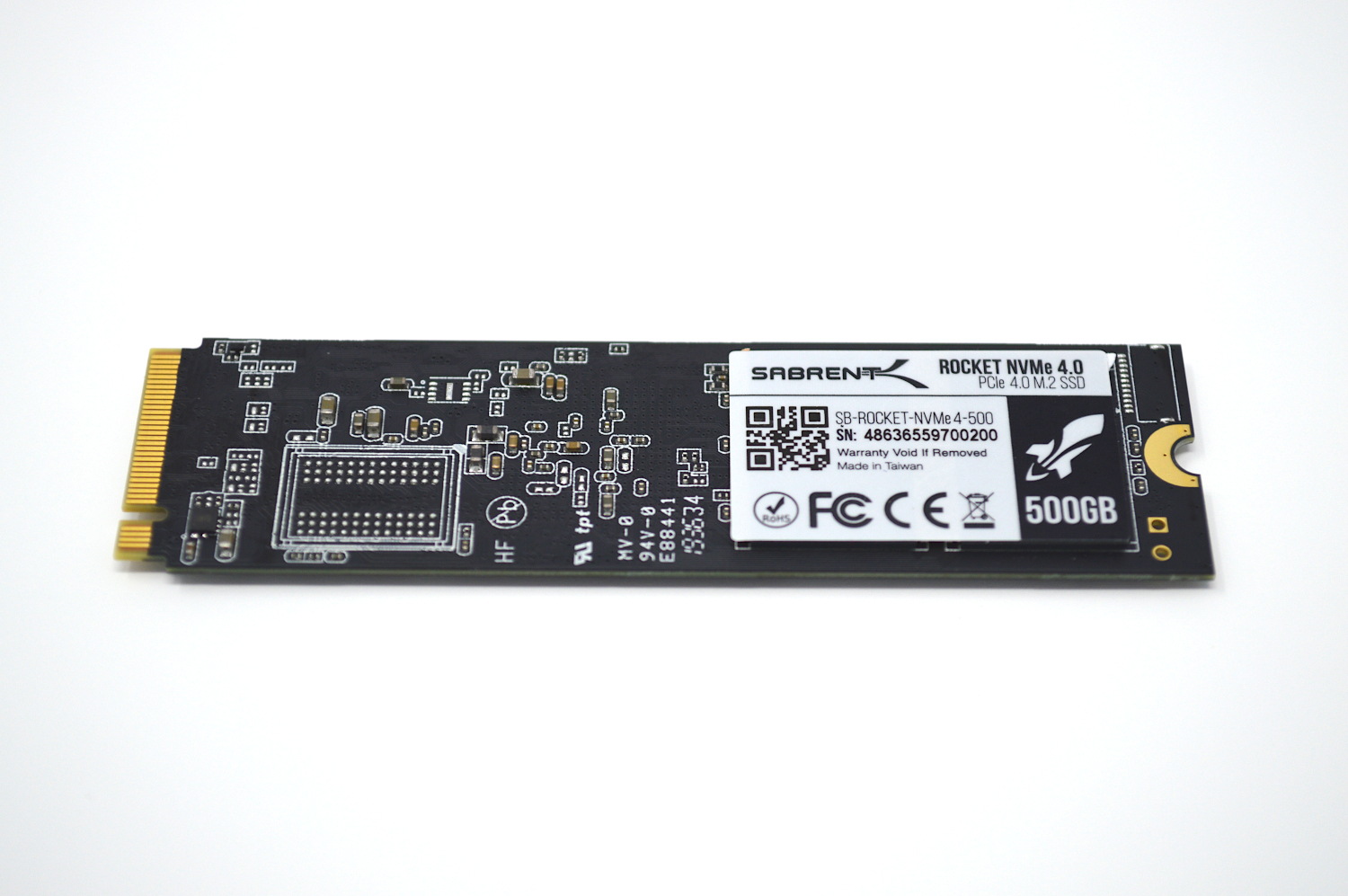
The back has a label with additional product information and half the NAND. As these modules are not intended for servers with sync writes, there is no power loss protection (PLP.) You can read a bit more about why PLP is important in some server workloads in our piece What is the ZFS ZIL SLOG and what makes a good one. That looks at a specific case but has a few diagrams and an explanation around what goes on with these drives when they do and do not have PLP.
Sabrent Rocket NVMe 4.0 Software Bundle
The Rocket NVMe 4.0 500GB includes three pieces of software available for download.
Sabrent Sector Size Converter
This utility does what its name implies and lets you convert the drive’s sector size between 512e and 4Kn.
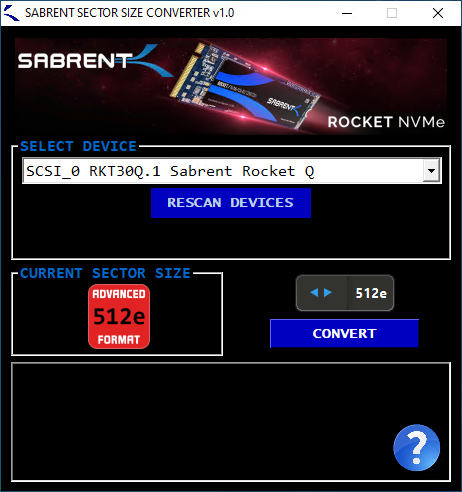
While interesting, most users will never have a need for it since most software is able to handle either sector size these days.
Sabrent Control Panel
Another utility Sabrent has is its Control Panel.
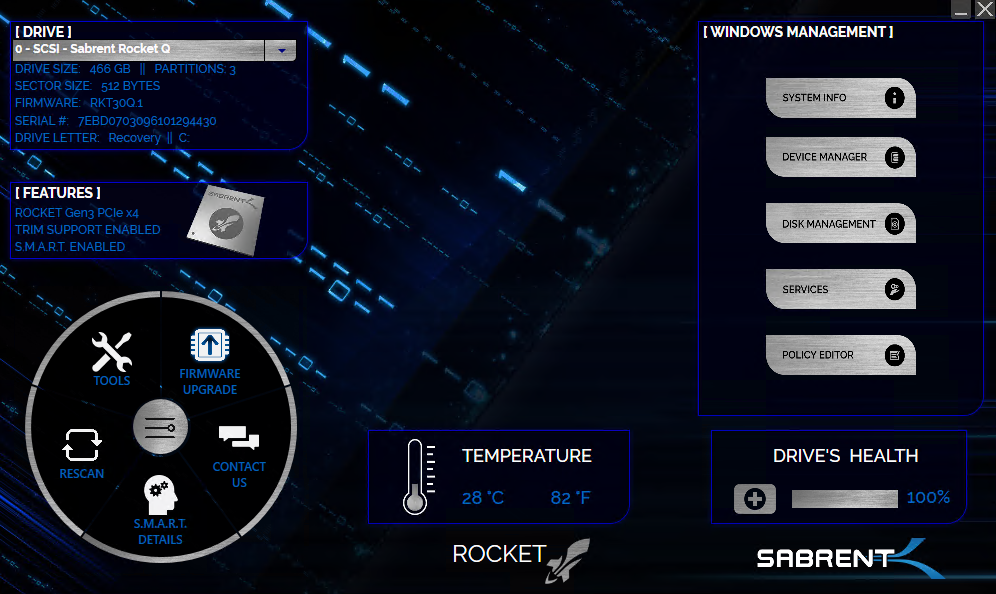
This utility gives access to some very basic information from the SSD as well as provides a mechanism for firmware updates.
Acronis True Image
The drive also comes with Acronis True Image which is well-known drive cloning and backup software. For consumer installations, software like this can make migrating to a new SSD a much easier process.
Rocket NVMe 4.0 Specs
The Rocket NVMe 4.0 line of TLC based SSDs has 500GB, 1TB, and 2TB capacities available.
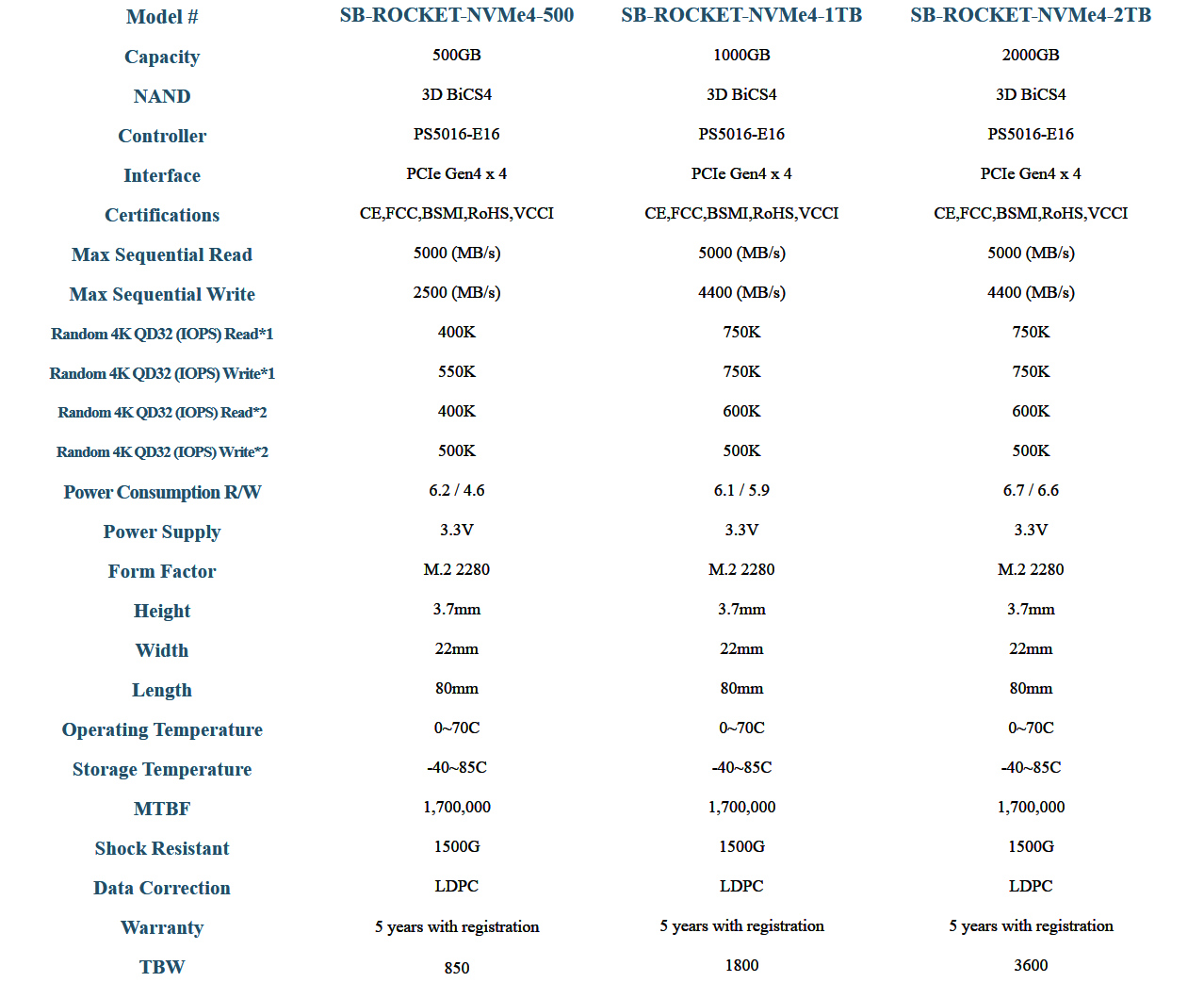
Since we are looking at the smallest drive in the line, performance and endurance will naturally be on the lower end due to how controller channels are populated.
The advertised specs are very similar to our recently reviewed Seagate Firecuda 520 500GB drive, with identical 5000MB/s read speeds, 2500MB/s write speeds, and 850TBW endurance. This makes sense, as the two drives also share the same controller in the Phison E16. As with the Seagate, this puts the Rocket NVMe 4.0 500GB drive in the interesting position of having read speeds that push well above what PCIe 3.0 drives can handle but write speeds that do not. Larger drives have faster-rated write performance, and buyers seeking high performance write characteristics should choose appropriately as a result.
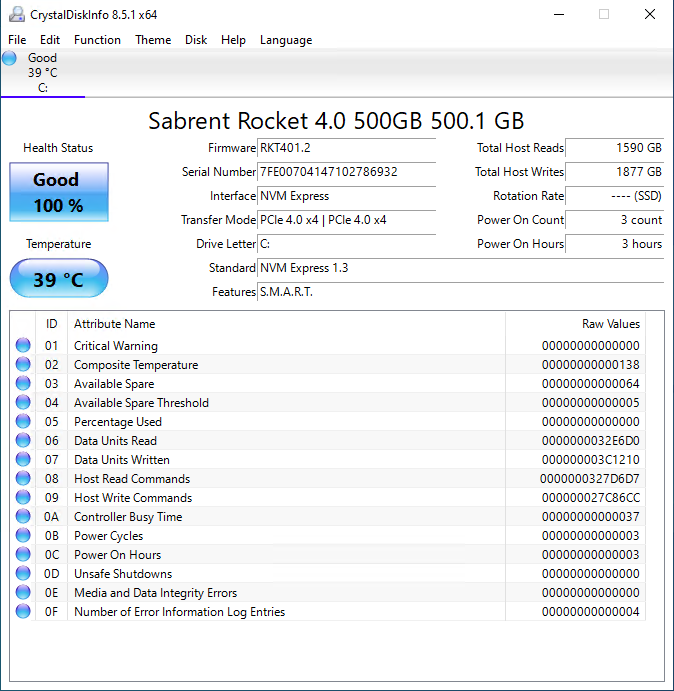
CrystalDiskInfo can give us some basic information about the SSD, and confirms we are operating at PCIe 4.0 x4 speeds using NVMe 1.3.
Test System Configuration
We are using the following configuration for this test:
- Motherboard: ASUS PRIME X570-P
- CPU: AMD Ryzen 5 3600 (6C/12T)
- RAM: 2x 16GB DDR4 3200 UDIMMs
Our testing uses the Rocket NVMe 4.0 500GB as the boot drive for the system, installed in the M.2_1 slot on the motherboard. The drive is filled to 85% capacity with data and then some are deleted, leaving around 60% used space on the volume.
Next, we are going to get into our performance testing.

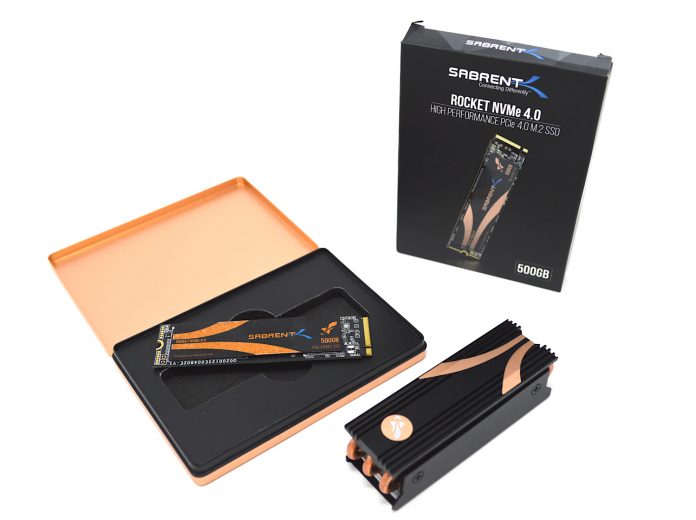



Testing somethig like pci 4.0 device without testing latency is pointless.
I have to admit, i never really look at the review score, and normally look at the “Conclusion”/”Final words” section to get a first impression of how a product fared in the review. So, it is kinda weird that i just only now saw that there is a Design&Aesthetics ranking, which baffles me to no end.
To make it clear, this is sort of a short rant not specifically about this SSD here nor Will’s great work.
As everybody can probably tell by now, I am not really a fan of Design&Aesthetics ranking, and how much it seems to contribute to the final score. I know, numerical scoring in reviews is debatable anyway. But hey, there is the numerical scoring right here, so…
Rating functional aspects of a product using some scalar value can make sense, as often there can be a set of criteria/checkboxes (a metric) defined, with the scalar value being some kind of aggregate representation of how many of those criteria were met to which degrees.
But what does that Design&Aesthetics value mean, and what is it based on? Isn’t aesthetics based on a subjective evaluation of appearance? Is Design&Aesthetics value here based on some statistical model of how aesthetically pleasing a product would be to a group of statistically average humans, or is it just representing the perceived rise in body temperature when the reviewer fondly looked at the product?
Now that i have become aware of the Design&Aesthetics ranking, it has become an irresistable mystery to me. Please help me!
I can just agree with Dr. Manhattan here, though I have wondered for long what the design rating is for but without ever asking the question “out loud”.
Could anyone on the STH team give some insight into this, or much rather, give a deep dive about how the scoring is done in general?
Guys, I agree that the Design and Aesthetics is less impactful on a M.2 SSD review. Will was asking me about this as well. We need to keep it in otherwise the back-end database gets unhappy since other reviews have it.
We have gone over scoring a few times in comments already. As always, feel free to read the review for a deep-dive into what is driving the summarized view. We focus a lot more on the depth as one can see.